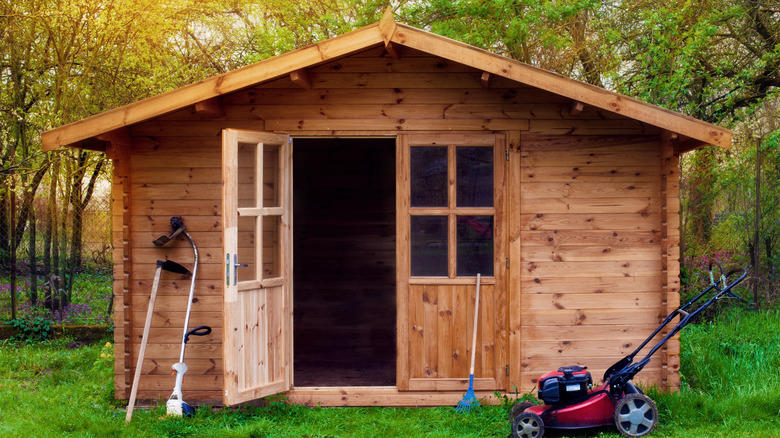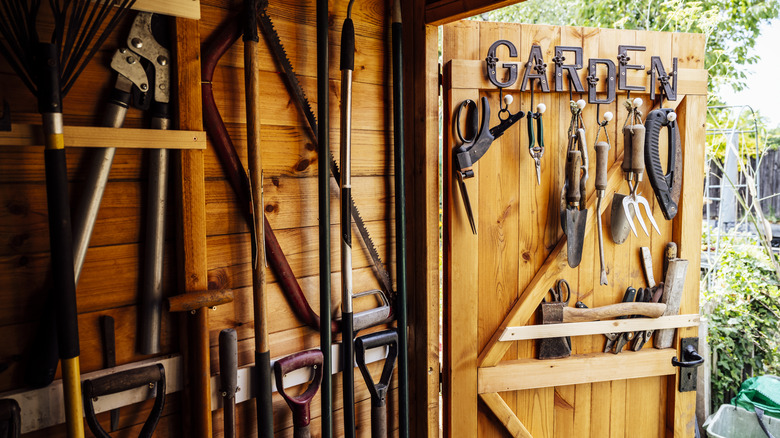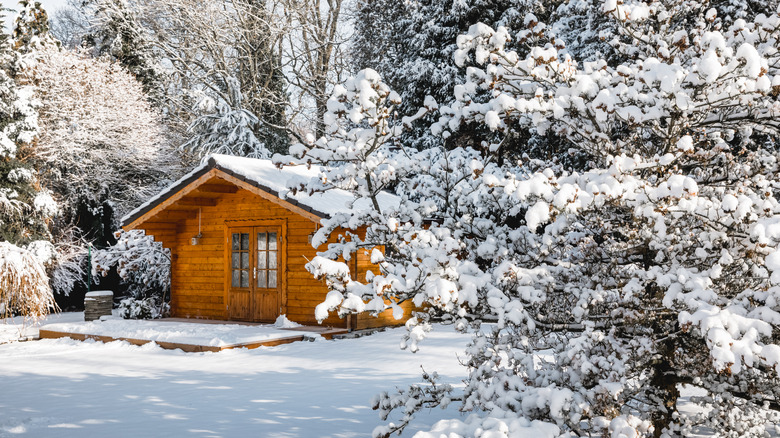The Pros And Cons Of A Wood Shed (And The Environments They're Best Suited For)
If you have backyard space and need some extra storage, you may be considering adding a shed. Sheds can be great for housing your outdoor gardening tools, firewood, or furniture that can't withstand all weather and may be ruined by rain or snow. And while some home items shouldn't be stored in your outdoor shed, like food and books, having a shed can help make organizing much easier. But before you start figuring out your shed inclusions, you'll first need to figure out what material is best to build the shed, whether that be wood, plastic, or metal.
Many people prefer wooden sheds for their backyard over other materials — not only is wood an easier material to work with, but it can also be more aesthetically pleasing than a plastic or metal alternative. On the other hand, though, wood can be prone to rot and attract pests like termites if not cared for properly. Wood can be used in pretty much any environment, so it's a great choice whether you live in a hot, humid climate or a cold, dryer climate. Still, even if you've decided on your material of choice, there are more things to consider before building your shed.
Pros and cons of having a wooden shed
A wooden shed is appealing for many reasons. If you are handy and prone to DIY-ing, wood is a familiar material that can be customized to fit your vision. Wood can be expensive, but a DIY wood shed can save money. But looks and price aren't the only reason to consider a wooden shed. Wood is very durable and can withstand a plethora of weather conditions, whether that be heavy rain or even extreme heat. Wood is also environmentally friendly, as opposed to plastic sheds, so a wooden shed in a backyard that is well maintained is a worthwhile investment for your home. Plus, if your wooden shed does sustain damage, it is easier to repair than sheds made of other materials.
Although wood seems like a superior option for a shed, that is not always the case. If you want a shed you can build and forget about, wood is not your best choice. To keep it long-lasting, you need to put in the work. That means consistent maintenance, including painting it and repainting when your first coat fades, cleaning it often, and sealing any cracks. Wood is also more prone to pests like termites and can rot if you let water sit in it too long, meaning that while a big rainstorm will not ruin your shed, not tending to it afterward can cause damage. Wooden sheds also often end up costing the homeowner more than a metal or plastic shed — wood is about $2 per square foot more than metal, and a pre-built plastic shed will cost you about half the price of a pre-built wooden shed.
The best environments for wooden sheds
Beyond the pros and cons of having a wooden shed, shed owners also want to consider their environment. Luckily, if you are vying for wood, it is well suited for pretty much any environment — so long as you care for it properly. The best part about wood is that it self-insulates, meaning that when you go into your shed in the winter, you'll be met with a warmer interior, making it easier to spend more time working on projects, organizing, or doing whatever else you need to do inside your shed. The same goes for hotter weather — the inside of your shed won't be quite as unbearable during hot summer months, as the wood will help cool things off.
If you live in an environment prone to dangerous weather, like blizzards or hurricanes, wood is also a good option due to its durability. On its own, a metal shed may hold up to extreme wind and rain better than a wooden shed, but if you prepare your shed properly and maintain it, clearing it of snow after a blizzard, using a wood sealer, and ensuring it is bolted to the ground before a hurricane or heavy windstorm, your wooden shed can be just as durable as a metal version.


